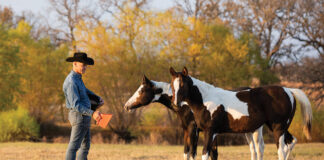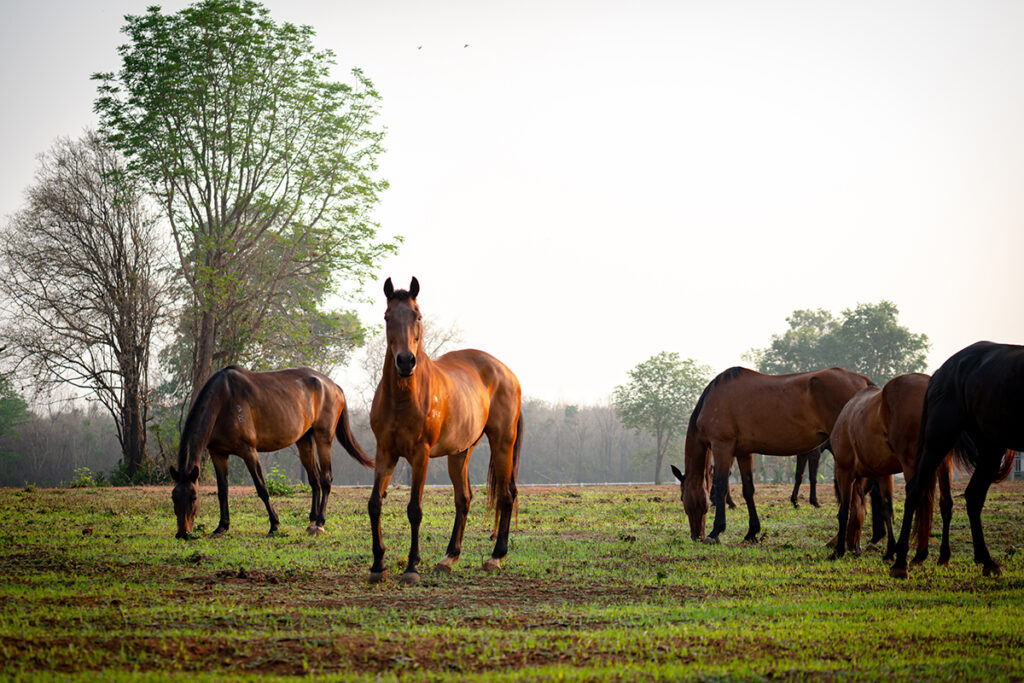
Rabies doesn’t always come in the form of a drooling, snarling, biting dog. Sometimes, especially in horses, this deadly disease presents itself quietly and mimics other conditions. Although equine rabies is relatively rare, it’s a silent killer. Not only can it fatally harm your horse, it infect you and others around the barn. Thankfully, rabies is easy to prevent.
Where and How Equine Rabies Starts
Anytime there’s an uptick in wildlife around your livestock, there’s an increased risk of your horse encountering an infected animal. This is especially true if an animal is displaying erratic behavior such as a nocturnal animal skulking about during the daytime. As we all know, horses are naturally curious, but that curiosity can be deadly.
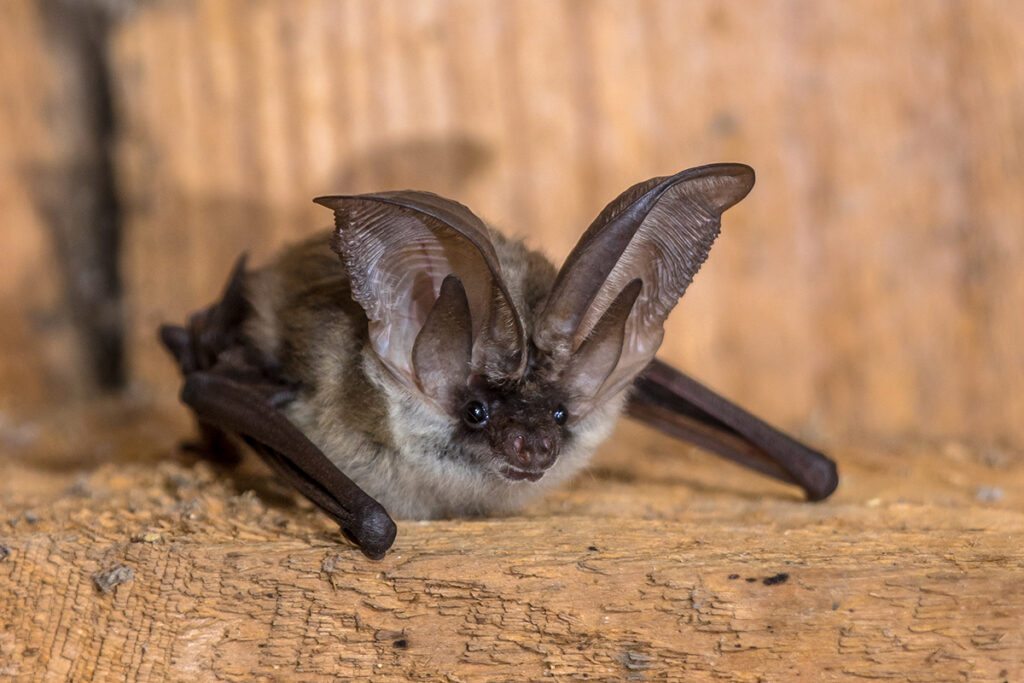
According to Kris Hiney, PhD, assistant professor and equine extension specialist at Oklahoma State University, horses most commonly contract rabies simply due to their curious nature.
“We’ve all seen horses that investigate animals, especially those acting abnormally,” she said. “Thankfully, it’s not extremely common, but rabies is endemic in the U.S. The closer your horse is to wildlife (essentially horses in pastures!) it has the potential to be exposed.”
Rabid animals transmit the viral disease through their saliva, most commonly through a bite. However, transmission can also occur when an infected animal’s saliva enters an open wound on your horse’s skin or through any mucous membrane, including the eyes, nose, and mouth.
Signs of Equine Rabies
There are two classic types of rabies your horse can contract—encephalitic and paralytic. These are more commonly referred to as furious or dumb rabies.
“Furious is just as it sounds, aggressive, and the dumb form results in lethargy, depression, etc.,” Hiney explained.
Clinical signs of equine rabies greatly vary, and the disease may progress rapidly or have a long incubation time with symptoms not appearing for two to six weeks, or even longer. Hiney said that commonly reported symptoms include going off feed, depression, and neurological changes. Other symptoms can include sudden behavioral changes, lameness, muscle tremors, head pressing, difficulty urinating, incoordination, teeth grinding, drooling, and facial paralysis among others.
After the onset of symptoms, your horse is highly contagious and usually only has a few days to a week to live. Unfortunately, the clinical signs of rabies in horses are easily confused with other diseases, which can result in exposure of other animals and human caregivers to the rabies virus.
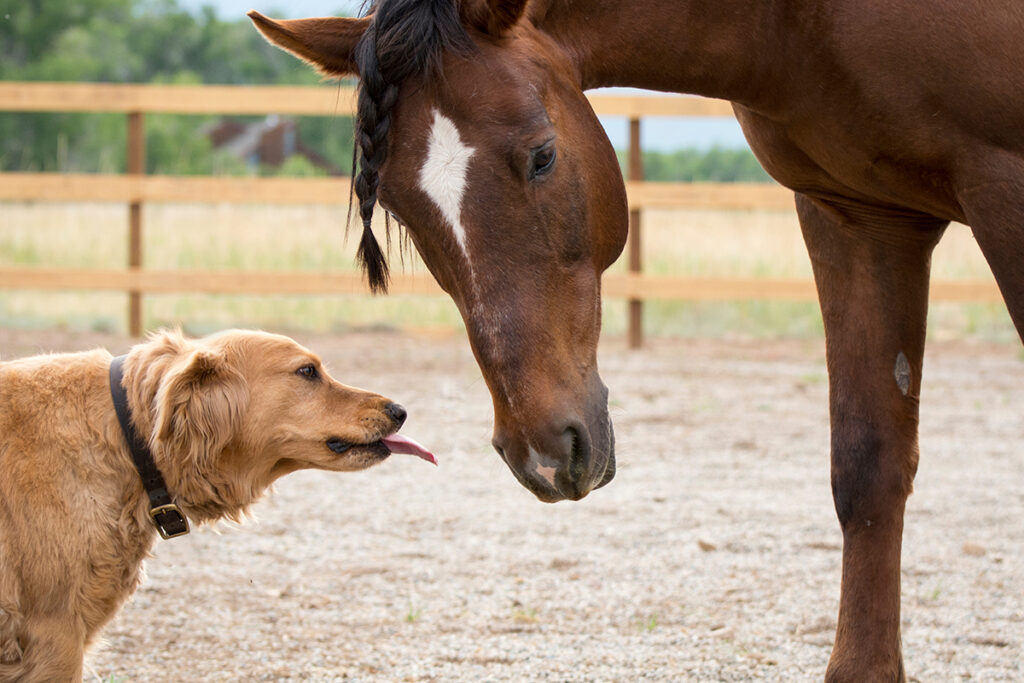
“Rabies symptoms may be mistaken for colic, EEE, WNV, toxicities, etc.,” Hiney said. “Anytime you see neurologic signs in a horse, you need to take it extremely seriously.”
There isn’t a definitive test to diagnose rabies in horses prior to death. Diagnosis can only be made postmortem through an evaluation of the horse’s brain. If rabies is suspected, it’s critical to limit exposure to the infected horse.
Preventing The Silent Killer
Rabies exposure in horses is less common than in other domestic animals. There were only 13 rabid horses/donkeys reported to the CDC in 2018, but a report from the University of Kentucky indicates about 30 to 60 equine rabies cases are confirmed annually.
With those numbers, why take a chance? An annual shot given with other essential vaccinations protects your horse and prevents him from becoming fatally ill.
“Vaccinate! This disease is preventable and more important it’s a human health risk,” Hiney stressed. “It should be considered part of the core vaccines–Tetanus, Rabies, West Nile, and Eastern and Western encephalitis.”
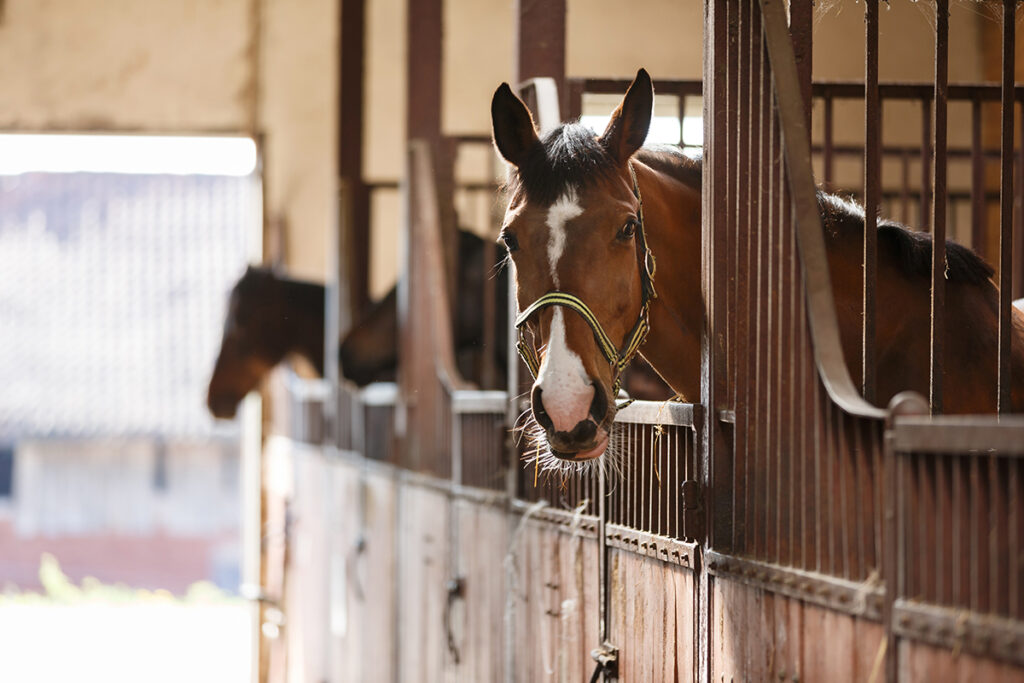
The alternative to a low-cost vaccination is grim. There aren’t any successful treatments for equine rabies, so there’s no cure.
“Death is always the outcome,” Hiney warned. “The horse may become depressed, ataxic, or more aggressive, depending on how the disease presents, but it always results in death.”
Routine contact with an infected horse may be all it takes for rabies to spread to the horse’s owner or caretaker, too.
“Rabies is kind of a cool virus strategically,” Hiney explained. “It causes salivation and painful swallowing. A large amount of virus is shed in the saliva so essentially it causes the body to do what will optimize its spread. So, any handling of the horse’s mouth could result in transmission. That’s why I recommend using extreme caution and optimal biosecurity protocols with a horse with neurologic conditions. And notify your vet of what they’re walking into!”





